- Home
- H. P. Lovecraft
The Thing on the Doorstep and Other Weird Stories
The Thing on the Doorstep and Other Weird Stories Read online
Table of Contents
THE THING ON THE DOORSTEP AND OTHER WEIRD STORIES
Title Page
Copyright Page
Acknowledgements
Introduction
The Tomb
Beyond the Wall of Sleep
The White Ship
The Temple
The Quest of Iranon
The Music of Erich Zann
Under the Pyramids
Pickman’s Model
The Case of Charles Dexter Ward
The Dunwich Horror
At the Mountains of Madness
The Thing on the Doorstep
EXPLANATORY NOTES
PENGUIN CLASSICS
THE THING ON THE DOORSTEP AND OTHER WEIRD STORIES
H. P. Lovecraft was born in 1890 in Providence, Rhode Island, where he lived most of his life. Frequent illnesses in his youth disrupted his schooling, but Lovecraft gained wide knowledge of many subjects through independent reading and study. He wrote many essays and poems early in his career, but gradually focused on the writing of horror stories, after the advent in 1923 of the pulp magazine Weird Tales, to which he contributed most of his fiction. His relatively small corpus of fiction—three short novels and about sixty short stories—has nevertheless exercised a wide influence on subsequent work in the field, and he is regarded as the leading twentieth-century American author of supernatural fiction. H. P. Lovecraft died in Providence in 1937.
S. T. Joshi is a freelance writer and editor. He has edited Lovecraft’s collected fiction as well as some of Lovecraft’s essays, letters, and miscellaneous writings. Among his critical and biographical studies are The Weird Tale (1990), Lord Dunsany: Master of the Anglo-Irish Imagination (1995), and H. P. Lovecraft: A Life (1996). He has also edited Atheism: A Reader (2000) as well as H. P. Lovecraft’s The Call of Cthulhu and Other Weird Stories and Algemon Blackwood’s Ancient Sorceries and Other Weird Stories for Penguin Classics. He lives in New York City.
PENGUIN BOOKS
Published by the Penguin Group
Penguin Putnam Inc., 375 Hudson Street,
New York, New York 10014, U.S.A.
Penguin Books Ltd, 27 Wrights Lane,
London W8 5TZ, England
Penguin Books Australia Ltd, Ringwood,
Victoria, Australia
Penguin Books Canada Ltd, 10 Alcorn Avenue,
Toronto, Ontario, Canada M4V 3B2
Penguin Books (N.Z.) Ltd, 182-190 Wairau Road,
Auckland 10, New Zealand
Penguin Books Ltd, Registered Offices:
Harmondsworth, Middlesex, England
First published in Penguin Books 2001
Selection, introduction and notes copyright © S. T. Joshi, 2001
All rights reserved
The stories in this volume are
eISBN : 978-1-101-15721-3
CIP data available
http://us.penguingroup.com
ACKNOWLEDGMENTS
I am grateful to Peter Cannon, Daniel Harms, Donovan Loucks, Robert M. Price, and especially David E. Schultz for assistance in the preparation of the texts and commentary.
INTRODUCTION
Nietzsche said that all philosophy is veiled autobiography, and much the same could be said of literature. The biographical approach to literature is not currently in fashion, what with the postmodernists’ gleeful proclamations of the “death of the author” and the New His toricists’ contention that authors merely mirror the social and political tendencies of their epochs. But authors have proved a surprisingly difficult species to kill off, and their creations continue to embody indi vidualities of style and outlook, and to refute the notion that literary works emerge fully formed, as if out of a jack-in-the-box, without in some manner reflecting the physical, intellectual, and imaginative experiences of their creators.
The horror fiction of H. P. Lovecraft (1890-1937) is more amenable to the biographical approach than many other creative works because of a series of historical accidents: the fact that Lovecraft, finding few like-minded individuals in his native Providence, Rhode Island, established a wide-ranging circle of correspondents to whom he wrote tens of thousands of letters; the fact that these letters do more than recount the mundanities of his relatively sedate physical existence, but embody the widest range of his intellectual and personal predilections, from his preference in doughnuts to his understanding of the cosmos; and the fact that many of his associates, from an early stage, appeared to recognize the literary and biographical value of these documents and preserved them carefully, so that they are now available for scholarly examination. Lovecraft has therefore become one of the most exhaustively self-chronicled individuals of his century, and his letters are the equivalent of a Pepys diary in their exhibition of the fluctuations of his mind and heart.
It would seem, on the surface, that horror and fantasy literature are not fruitful for biographical analysis, since (as Lovecraft himself stated) the essence of these literary modes is to depict “something which could not possibly happen.”1 But while the actual supernatural event is not likely to yield any simple or straightforward autobiographical connection, other aspects of a story may well do so. Naturally, care and judgment must always be exercised. When, in the early story “The Tomb” (1917), Lovecraft’s narrator declares that he was “wealthy beyond the necessity of a commercial life, and temperamentally unfitted for the formal studies and social recreations of my acquaintances,” we see the expression of a wish rather than of the reality. Lovecraft was indeed born into a relatively well-to-do family that could boast one authentic business genius—his grandfather Whipple Van Buren Phillips, a bold and dynamic industrialist who made and lost several fortunes in his continent-spanning career—but by 1917 the family had already been reduced both in numbers (Lovecraft’s father had died in 1898 of syphilis, his grandfather in 1904 of heart failure, probably brought on by his latest business collapse) and in economic wealth, so that Lovecraft, his mother, and his two aunts were compelled to struggle along largely on the ever-dwindling supply of money from Whipple’s inheritance. As for “formal studies,” Lovecraft’s early ill-health—very likely nervous or psychological in origin —caused his school attendance to be highly irregular: two separate years (1898-99 and 1902-3) at the Slater Avenue School, and four years (1904-8), with numerous absences, at the Hope Street High School, culminating in a nervous breakdown that resulted in his abrupt withdrawal without a diploma. For the next five years Lovecraft became as reclusive as any of his eccentric narrators, absorbing prodigious quantities of information out of books but doing little to make himself employable in the outside world.
Perhaps Lovecraft’s turn to pure fantasy in 1919, under the influence of the great Irish novelist and playwright Lord Dunsany, was not so surprising. By this time his mother had suffered a nervous breakdown of her own and would never emerge from the sanitarium in which she was confined. Was Lovecraft merely seeking an “escape from life”?2 That would perhaps be a too facile analysis. Anyone who has ever read the early work of Dunsany—especially The Gods of Pegāna (1905) and A Dreamer’s Tales (1910)—will attest to the almost sensual experience of ideal beauty embodied in them, and it is no surprise that Lovecraft spent the better part of the next two years in earnest but ultimately futile attempts to duplicate the style and spirit of his mentor. And yet, his “Dunsanian” tales are “failures” only when gauged as simple pastiches; for a large part of their “failure” resides in the plain fact that Lovecraft’s own temperament keeps obtruding itself in tales that he himself envisioned as nothing but humble imitations. When, in “The White Ship” (1919), the protagonist
deserts the tranquil Land of Sona-Nyl, where “there is . . . neither suffering nor death,” for what proves to be the mythical realm of Cathuria, “the Land of Hope,” we see a direct reflection of the Epicurean moral philosophy that Lovecraft had absorbed as a result of his early classical studies: “Remember that the goal of the great Epicurus was not an earthly he-done (Hedonism), or pleasure, but a lofty ataraxia, or freedom from cares and trivial thoughts.”3 And when Iranon, in “The Quest of Iranon” (1921), becomes old overnight because he has suddenly lost the hope of ever finding the imaginary realm of Aira, we find a philosophical message for which we would search in vain in the work of Dunsany. “The flight of imagination,” wrote Lovecraft in 1920, “and the delineation of pastoral or natural beauty, can be accomplished as well in prose as in verse—often better. It is this lesson which the inimitable Dunsany hath taught me.”4
But Lovecraft would not be much remembered if he had written nothing but the competent but ultimately insubstantial tales of the first five or six years of his literary career. Even so perfectly crafted a tale as “The Music of Erich Zann” (1921)—which Lovecraft ranked second among his own favorites, after “The Colour Out of Space”—does no more than hint at the cosmic horrors of his final decade. Lovecraft came to realize that he would need a broader palette with which to paint the wonders and terrors of the universe of which the earth and all upon it are the tiniest and most insignificant particles. It was not merely a matter of length, although that was important (most of his later tales are novelettes, novellas, or short novels, but even the longest of them retain all the unity of effect that Poe sought in the short story); he also needed to fuse the varied literary influences upon his work—Poe; Dunsany; the Welsh mystic Arthur Machen, whose novels and stories Lovecraft discovered in 1923; the cosmic tales of Algernon Blackwood, first read in 1924—so as to produce that new and unclassifiable amalgam we call the Lovecraftian tale. More, he required some further life experiences—including an uprooting from the placidity of his rather aimless life as a “professional amateur” in Providence.
“Under the Pyramids” provides a hint of some of these changes. Its autobiographical features relate not to the incidents it depicts but to its mode of composition. In early 1924 Lovecraft, having become the star writer for the new pulp magazine Weird Tales, was asked to ghostwrite a story for escape artist Harry Houdini, who had been persuaded to lend his name to the magazine in order to rescue it from flagging sales and an early demise. Lovecraft did not meet Houdini at this time (he would do so later, in New York), but was told of an adventure that Houdini had supposedly experienced in Egypt more than a decade earlier, and this was to serve as the basis for the narrative. Lovecraft quickly determined that Houdini’s story was pure fiction, and he asked Weird Tales owner J. C. Henneberger for as much latitude as possible in fashioning his tale. Apparently Lovecraft was given that latitude, for the tale as we have it is certainly extravagant to a fault, although providing the kind of “guilty pleasure” that the best pulp fiction was meant to provide. Alas for the best-laid plans of mice and men! Lovecraft, delaying until the last minute, finished the story only a day or two before he departed for New York on March 2, 1924, on a voyage whose true purpose he revealed to no one, not even to his two aunts—his marriage to Sonia H. Greene, a Russian Jewish immigrant seven years his senior. The marriage took place the next day, Lovecraft casually informing his aunts a week later by letter; but in the rush of events, he left the typescript of the story in Union Station in Providence! (It is from the ad Lovecraft placed in the lost-and-found section of the Providence Journal that we know his preferred title to the story; it was published in Weird Tales as “Imprisoned with the Pharaohs.”) The newlyweds were therefore obliged to spend much of the next two days retyping the manuscript, which Lovecraft had providentially brought along with him. Sonia remarks, with exquisite tact, that “when the [typing of the] manuscript was finished we were too tired and exhausted for honeymooning or anything else.”5
Why would such a man as Lovecraft—who up to this point had expressed an interest only in literature, science, colonial antiquities, and other intellectual subjects, and who at the age of twenty-nine had expressed a complete inexperience in “amatory phenomena”6—suddenly plunge into marriage? To be sure, Lovecraft was one of the most asexual beings on record; perhaps he thought that his marriage would also be largely an affair of the intellect. Certainly, his strange March 9 letter to his aunts unwittingly suggests that marriage to Sonia might be slightly preferable to boredom and suicide! But perhaps a much later work—the story “The Thing on the Doorstep” (1933)—provides some hints, although even these may be unwitting.
Here we find a weak-willed individual, Edward Derby, who upon the death of his mother “was incapacitated by some odd psychological malady”—just as Lovecraft professed that the death of his own mother in 1921 “gave me an extreme nervous shock,” and later: “Psychologically I am conscious of a vastly increased aimlessness and inability to be interested in events. . . . This bereavement decentralises existence—my sphere no longer possesses a nucleus, since there is now no one person especially interested in what I do or whether I be alive or dead.”7 But what does Derby do? “Afterward he seemed to feel a sort of grotesque exhilaration, as if of partial escape from some unseen bondage.” This is the closest Lovecraft ever came to speaking, in public, of the effect his mother had upon him. The cloistered life the two of them led from 1904 to 1919—with ever-dwindling finances and with his mother so terrified of bankruptcy and so frustrated by her brilliant but “useless” son that she herself suffered a nervous breakdown and had to be sent to Butler Hospital—can only be imagined. Lovecraft himself was plagued by a variety of nervous ailments during this period, and yet in later years he would remark casually to friends that “My health improved vastly and rapidly, though without any ascertainable cause, about 1920-21.”8 Was Lovecraft really so unaware of the “unseen bondage” he had escaped? There is good reason to doubt it, if “The Thing on the Doorstep” is any evidence.
And just as Asenath Waite, although much younger than Edward Derby, pursues him relentlessly until he marries her, Sonia Greene—who first met Lovecraft only six weeks after the death of his mother—went out of her way to visit him in Providence and to invite him for lengthy visits to her Brooklyn apartment in 1921-22. She claims that they were corresponding almost daily in 1923-24, and he must have made the decision to marry and uproot himself months before he actually did so. Initially, the fairylike skyscrapers of New York were a wonder and a marvel, and the numerous literary friends he had in the area were a tonic both to his intellectual and to his burgeoning social life. But eventually, one had to think of work. Sonia’s hat shop collapsed, and there was suddenly “something of a shortage in the exchequer.” 9 Now began the humiliating period of job-hunting. But who, in this city of garish modernity and hard-sell, would hire a well-bred New England gentleman who had never been previously employed and seemed fit only to turn the elegant phrase? No one, it transpired, even though Lovecraft tried such inapposite positions as salesman for a collection agency and lamp-tester. Somewhat surprisingly, even publishing companies and advertising agencies that might have benefited from Lovecraft’s facile pen turned him down. Sonia then had to leave New York and take a job in the Midwest, Lovecraft holing up in a one-room dive in what was then the virtual slum of Brooklyn Heights. Matters were not helped by his being robbed of nearly all his clothing in May 1925.
In this trying period, Lovecraft himself exhibited all the weakness of will of his later creation, Edward Derby. He could not bring himself to admit to his aunts that his decision to marry was rash and ill-conceived, and that (as he wrote in “He” [1925]) his “coming to New York had been a mistake”; instead, he waited until the aunts themselves (apparently prodded by Lovecraft’s best friend in New York, Frank Belknap Long) issued the invitation to return home in the spring of 1926. Then, while accepting that invitation with alacrity and relief, he gave little though
t to how his wife fit into the scheme of things. When Sonia proposed to set up a hat shop in Providence, the aunts vetoed the measure: shabby genteel though they were, they still had enough sense of their social standing to be appalled at the thought of a tradeswoman wife for their nephew. Lovecraft, like Derby, meekly acquiesced in his aunts’ decision, effectively ending the marriage.
And yet, as Derby’s friend Daniel Upton hypothesized, “Perhaps the marriage was a good thing—might not the change of dependence form a start toward actual neutralisation, leading ultimately to responsible independence?” This is exactly what happened in Lovecraft’s case. As his longtime friend W. Paul Cook attested, Lovecraft’s New York “exile” had been a hard necessity to his emotional maturation: “He came back to Providence a human being—and what a human being! He had been tried in the fire and came out pure gold.”10 His homecoming did not signal a return to the hermitry of the 1908-13 period; instead, with a stable and familiar base of operations, Lovecraft could travel both physically (as he did over the next decade, from Quebec to Key West, from Cape Cod to New Orleans, from Boston to Charleston) and intellectually: he began paying close attention to developments in American and world politics, society, culture; his fictional work, accordingly, lost the “derivative and overbookish” qualities that hampered the poetry of Edward Derby. His transient experience of New York cosmopolitanism had only reemphasized the importance of his New England heritage for his aesthetic, emotional, and intellectual outlook; and yet, he became the antithesis of the backwoods New England farmer of “The Picture in the House” (1920), and instead took the entire cosmos as the stage of his imaginative voy agings.

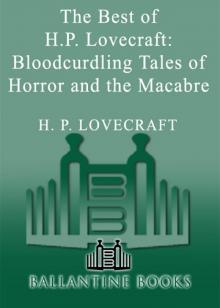 The Best of H.P. Lovecraft
The Best of H.P. Lovecraft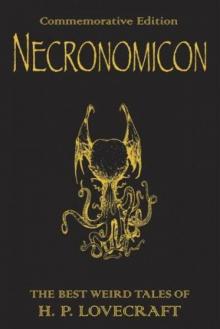 The Definitive H.P. Lovecraft: 67 Tales Of Horror In One Volume
The Definitive H.P. Lovecraft: 67 Tales Of Horror In One Volume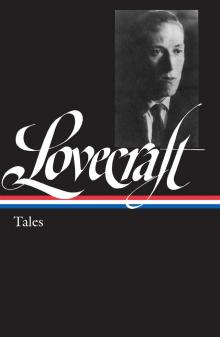 The Complete Works of H.P. Lovecraft
The Complete Works of H.P. Lovecraft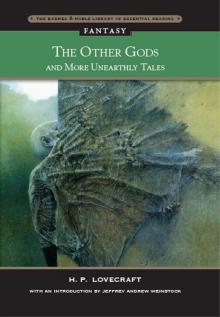 Other Gods and More Unearthly Tales
Other Gods and More Unearthly Tales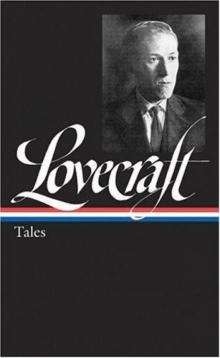 Lovecraft's Fiction Volume I, 1905-1925
Lovecraft's Fiction Volume I, 1905-1925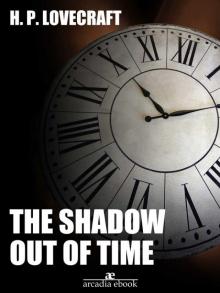 The Shadow Out of Time
The Shadow Out of Time The Shunned House
The Shunned House Lovecraft's Fiction Volume II, 1926-1928
Lovecraft's Fiction Volume II, 1926-1928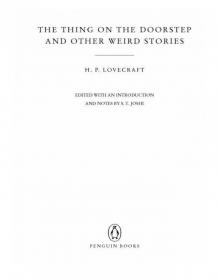 The Thing on the Doorstep and Other Weird Stories
The Thing on the Doorstep and Other Weird Stories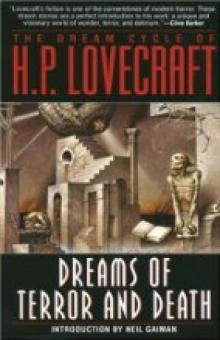 Dream Cycle of H. P. Lovecraft: Dreams of Terror and Death
Dream Cycle of H. P. Lovecraft: Dreams of Terror and Death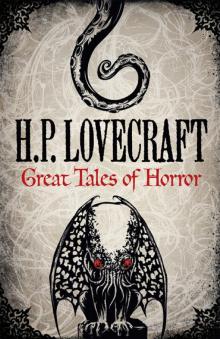 Great Tales of Horror
Great Tales of Horror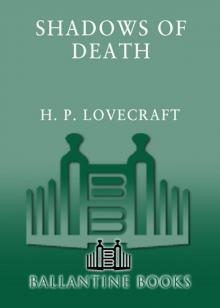 Shadows of Death
Shadows of Death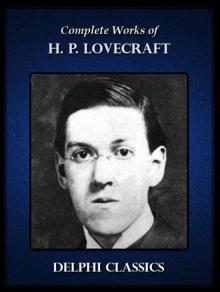 Delphi Complete Works of H. P. Lovecraft (Illustrated)
Delphi Complete Works of H. P. Lovecraft (Illustrated)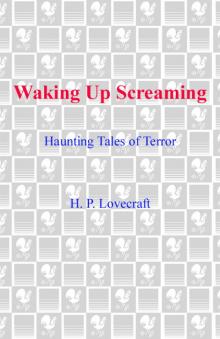 Waking Up Screaming: Haunting Tales of Terror
Waking Up Screaming: Haunting Tales of Terror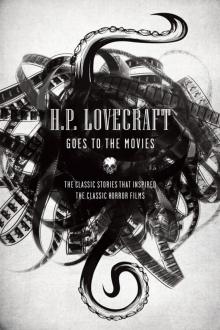 H.P. Lovecraft Goes to the Movies
H.P. Lovecraft Goes to the Movies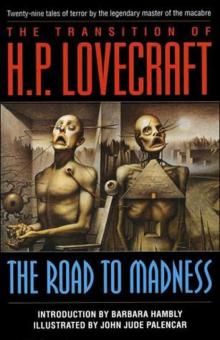 The Road to Madness
The Road to Madness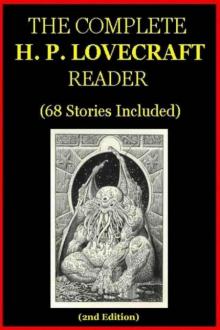 The Complete H.P. Lovecraft Reader (68 Stories)
The Complete H.P. Lovecraft Reader (68 Stories)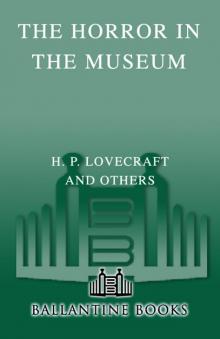 The Horror in the Museum
The Horror in the Museum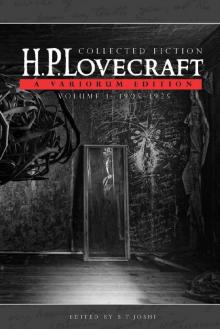 Collected Fiction Volume 1 (1905-1925): A Variorum Edition
Collected Fiction Volume 1 (1905-1925): A Variorum Edition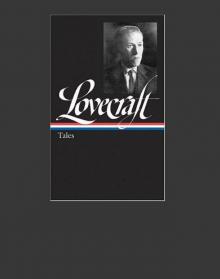 Lovecrafts_Fiction, vol.I_1905-1925
Lovecrafts_Fiction, vol.I_1905-1925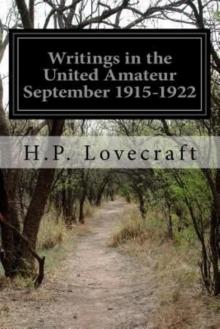 Writings in the United Amateur, 1915-1922
Writings in the United Amateur, 1915-1922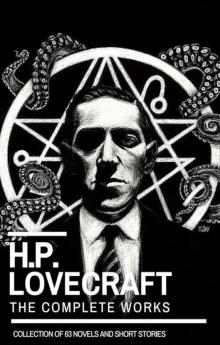 H.P. Lovecraft: The Complete Works
H.P. Lovecraft: The Complete Works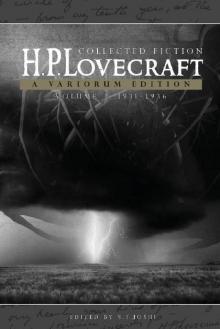 Collected Fiction Volume 3 (1931-1936): A Variorum Edition
Collected Fiction Volume 3 (1931-1936): A Variorum Edition H.P. Lovecraft: The Complete Fiction
H.P. Lovecraft: The Complete Fiction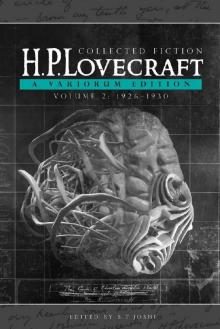 Collected Fiction Volume 2 (1926-1930): A Variorum Edition
Collected Fiction Volume 2 (1926-1930): A Variorum Edition Yog Sothothery - The Definitive H.P. Lovecraft Anthology
Yog Sothothery - The Definitive H.P. Lovecraft Anthology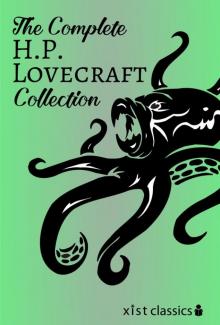 The Complete H.P. Lovecraft Collection (Xist Classics)
The Complete H.P. Lovecraft Collection (Xist Classics)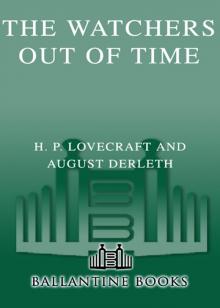 The Watchers Out of Time
The Watchers Out of Time Eldritch Tales
Eldritch Tales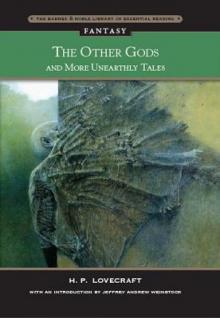 The Other Gods And More Unearthly Tales
The Other Gods And More Unearthly Tales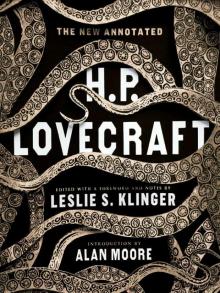 The New Annotated H. P. Lovecraft
The New Annotated H. P. Lovecraft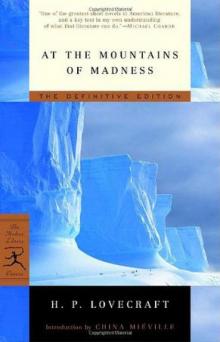 At the mountains of madness
At the mountains of madness Bloodcurdling Tales of Horror and the Macabre
Bloodcurdling Tales of Horror and the Macabre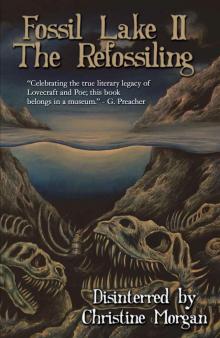 Fossil Lake II: The Refossiling
Fossil Lake II: The Refossiling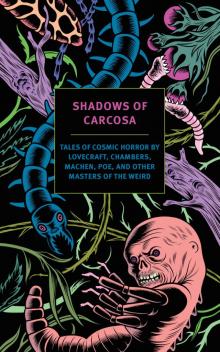 Shadows of Carcosa: Tales of Cosmic Horror by Lovecraft, Chambers, Machen, Poe, and Other Masters of the Weird
Shadows of Carcosa: Tales of Cosmic Horror by Lovecraft, Chambers, Machen, Poe, and Other Masters of the Weird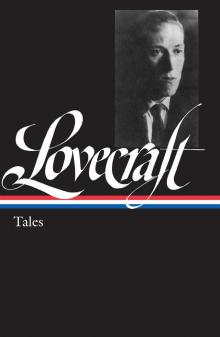 H. P. Lovecraft
H. P. Lovecraft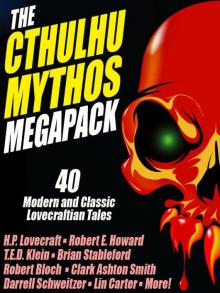 The Cthulhu Mythos Megapack
The Cthulhu Mythos Megapack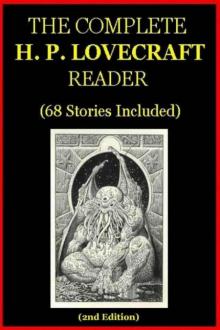 The Complete H. P. Lovecraft Reader (2nd Edition)
The Complete H. P. Lovecraft Reader (2nd Edition)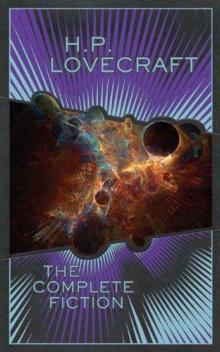 The Complete Fiction
The Complete Fiction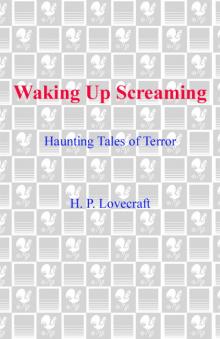 Waking Up Screaming
Waking Up Screaming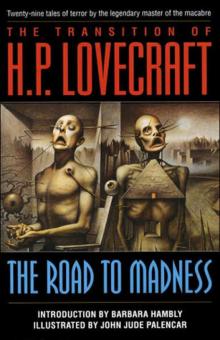 Transition of H. P. Lovecraft
Transition of H. P. Lovecraft![[1935] The Shadow Out of Time Read online](http://i1.bookreadfree.com/i2/04/12/1935_the_shadow_out_of_time_preview.jpg) [1935] The Shadow Out of Time
[1935] The Shadow Out of Time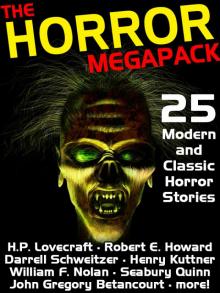 The Horror Megapack
The Horror Megapack